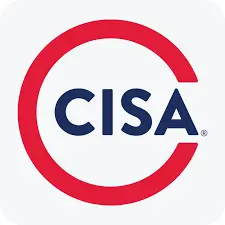Få nye IT-ferdigheter, bli sertifisert og løft IT-karrieren til nye høyder uten å sprenge banken!
Unlimited Taining – IT kurs og sertifiseringer gjort enkelt og utrolig billig. Få tilgang til 60+ Top LIVE-kurs for mindre enn prisen for ett kurs.











course: ISACA CISA Certification
Varighed: 4 dager
Format: Virtual or Classroom


Oversikt
Legg ut på en transformativ reise med ISACA CISA-sertifiseringen. Løft karrieren din gjennom målrettet opplæring og bli sertifisert for å navigere i den dynamiske verdenen av revisjon av informasjonssystemer. Vårt spesialiserte program utstyrer deg med ekspertisen som trengs for å klare CISA-eksamenen, og låser opp enestående muligheter for vekst og suksess i din profesjonelle reise. Invester i fremtiden din i dag og bli en sertifisert leder i verden av IT-revisjon.
 Instruktørledet opplæring
Instruktørledet opplæring Practice test
Practice test Selvstudiemateriell
Selvstudiemateriell Personlig læringsplan
Personlig læringsplan Sertifiseringsgaranti
Sertifiseringsgaranti E-mail, chat og telefonsupport
E-mail, chat og telefonsupport









Hvem er kurset rettet mot?
ISACA CISA (Certified Information Systems Auditor)-sertifiseringen er beregnet på de som jobber innen revisjon, kontroll og sikkerhet av informasjonssystemer. Den er designet for de som ønsker å validere sine kunnskaper og ferdigheter innen revisjon, kontroll og sikring av informasjonssystemer i organisasjoner. CISA-sertifiseringen dekker et bredt spekter av emner knyttet til revisjon og sikkerhet av informasjonssystemer, inkludert revisjonsprosessen for informasjonssystemer, styring og styring av IT, anskaffelse, utvikling og implementering av informasjonssystemer, drift av informasjonssystemer, vedlikehold og serviceadministrasjon, og beskyttelse av informasjonsmidler.
Kursinnhold
Forberedelse
Hos Readynez stiller vi med mange ressurser og har erfarne eksperter på området. Derfor har vi også stor suksess med mange fornøyde kunder. Du kan derfor trygt ta kurset ditt hos oss. For å ta CISA-kurset anbefales det imidlertid noen forkunnskaper.
Denne forkunnskapen gir deg det perfekte utgangspunktet for å ta kurset:
Vi anbefaler at du har minst fem års erfaring fra profesjonell informasjonssystemer revisjon, kontroll eller sikkerhet (som beskrevet i jobbinnholdsområdene)
Erstatninger og fraskrivelser av slik erfaring kan oppnås som følger:
Møt noen av instruktørene du kan møte på kurset ditt. De er eksperter, lidenskapelig opptatt av yrket sitt og dedikert til å gi kunnskapen sin tilbake til industrien, yrket og de som ønsker å lære, utforske og fremme karrieren.

Kevin Henry er en globalt anerkjent ekspert som i over 20 år har bidratt til opplæring og sertifisering av mennesker innen IT-sikkerhet, inkludert CISSP, CISM, CISA og andre.
Kevin Henry is a well-known and highly respected expert instructor with Readynez.
Kevin has served for many years as an authorised instructor for (ISC)2 and he is renowned for his 20-year contribution to learners training for IT security skills- and certifications such as the CISSP, CSSLP, CISM, CISA and CCSP everywhere in the world.
Kevin is a force to be reckoned with, being an authorised instructor and training no less than 9.000 online learners monthly in the fields of information security and audit, in addition to the many students that attend his instructor-led courses with Readynez
He is also one of the most highly-rated instructors and most often he is given scores of 10/10 by his students with comments like these:
“Fantastic teaching and coaching”
Fredrik Palmquist Orange
“Most Excellent educator”
Jens Johanson Trafikverket

James Rowney er en velkjent ekspert med over 20 års bidrag til opplæring av IT-sikkerhetsferdigheter.
James has worked on many large mission critical environments in some of the largest companies in their industries.
Understanding business requirements and drivers are essential to any strategy and design. Understanding environments are key to any application or infrastructure changes, both the immediate services they interface with and those beyond. A failure to satisfy Non Functional Requirements can not be fixed by a process.
Specialties: CISSP, CCSP, AWS Solution Architect Associate, TOGAF 9 certified 86080 member of The Association of Enterprise Architects (AEA) - 27519830. BCS Solution & Enterprise Architect Certified - AMBCS - 990529878, Linux RHCE V5 expired, RHCVA Unix, Storage, SAN, Netbackup, Clusters, Design and Delivery of Infrastructure.

Friedhelm har mer enn 30 års erfaring innen IT, sikkerhet og personvern som senior informasjonssikkerhetskonsulent.
Friedhelm Düsterhöft is a Senior Information Security Consultant, Auditor, Trainer and Managing Director, and has 30+ years of work experience in IT, Information Security and Data Privacy.
He has contributed to various PECB whitepapers and articles, such as ’Information Security in Banks and Financial Institutions’, ‘What Does SIEM Stand For?’, ‘Why Organizations Fail to Pass an Audit’ and “How to Integrate ISO/IEC 27032 Cybersecurity with ISMS?’.
FAQ
Certified Information Systems Auditor (CISA)-sertifiseringen fra ISACA er en globalt anerkjent legitimasjon for fagfolk som er engasjert i revisjon, kontroll og sikkerhet av informasjonssystemer. CISA validerer ens ekspertise i å vurdere og evaluere informasjonssystemer, gi sikkerhet for deres sikkerhet og sikre effektiv styring og risikostyring.
Lås opp potensialet ditt med Readynez og beseire ISACA CISA-eksamenen. Vårt omfattende kurs gir enkeltpersoner og team kunnskapen og ferdighetene som trengs for å trygt navigere i vanskelighetene med revisjon av informasjonssystemer. Få forspranget i karrieren din mens du forbereder deg på suksess og blir en sertifisert ekspert innen IT-revisjons dynamiske område. Readynez er din partner for å oppnå dyktighet i sertifisering.
For å kvalifisere for ISACAs CISA-sertifisering trenger kandidater minimum fem års yrkeserfaring innen revisjon, kontroll eller sikkerhet av informasjonssystemer. Alternativt kan kandidater erstatte opptil tre års erfaring med en relevant grad. Send inn dokumentasjon og oppfylle utdanningskrav for kvalifikasjon.
CISA-eksamengebyrene er ikke-refunderbare og ikke-overførbare. De inkluderer utgiftene organisasjonene påløper med eksamenskontrollører, poengprosessen og bruk av testsenteret. Medlemmer av ISACA betaler $575, mens ikke-ISACA-medlemmer betaler $760 for CISA-eksamenen.
ISACA CISA-eksamensplanen omfatter fire domener: Revisjonsprosess for informasjonssystemer, styring og ledelse av IT, anskaffelse, utvikling og implementering av informasjonssystemer, og drift av informasjonssystemer, vedlikehold og tjenesteadministrasjon. Eksamenen dekker viktige ekspertiseområder og evaluerer kandidater på deres ferdigheter innen revisjon av informasjonssystemer, styring, risikostyring og operasjonell praksis.
Ja, ISACA Certified Information Systems Auditor (CISA)-sertifiseringen er høyt ansett i IT- og informasjonssikkerhetsindustrien. CISA demonstrerer ekspertise innen revisjon av informasjonssystemer, styring, risikostyring og kontroll. Å ha en CISA-sertifisering kan forbedre karrieremuligheter, åpne dører til seniorroller og validere din forpliktelse til å opprettholde høye standarder innen informasjonssystemsikkerhet og revisjonspraksis.
Tidslinjen for å bli ISACA CISA-sertifisert varierer basert på individuelle faktorer som tidligere erfaring, studievaner og forberedelsesmetoder. I gjennomsnitt bruker kandidater flere måneder på å forberede seg til eksamen. Dette inkluderer å studere domenene, øve med eksempelspørsmål og få en omfattende forståelse av revisjonsprinsipper for informasjonssystemer. Når de er forberedt, kan kandidatene planlegge og ta CISA-eksamenen.
ISACA tilbyr både personlige og nettbaserte eksamensalternativer for Certified Information Systems Auditor (CISA)-sertifisering.
Vanskelighetsgraden for ISACA Certified Information Systems Auditor (CISA) eksamen kan variere basert på en persons bakgrunn, erfaring og forberedelse. CISA-eksamenen er kjent for sin omfattende dekning av informasjonssystemrevisjon, styring, risikostyring og kontrollkonsepter.
Eksamenskandidatresultater konverteres til skalert poengsum ved bruk av en vanlig skala på 200-800. En skalert poengsum på 450 eller høyere kreves for å bestå.
Vedlikehold av CISA® krever at du tjener minimum 20 CPE-er årlig og totalt 120 CPE-er over en 3-årsperiode.
CISA-innehavere kan tjene lønn fra $80 000 til $120 000 årlig, avhengig av faktorene som er nevnt.
Anmeldelser

Readynez er den beste treningsleverandøren jeg har brukt på mange år. Kundeservicen deres er førsteklasses, prisene er veldig konkurransedyktige og instruktørene er utmerket.

Lett å delta over Teams og en utmerket instruktør ga meg stor verdi for tiden jeg investerte.
Hvorfor Betale Mer?
Hvorfor nøye seg med bare ett sertifiseringskurs når du kan delta på ALLE sertifiseringskurs til en pris som er lavere enn prisen på ett kurs?

Den perfekte måten for oss å utvikle ferdighetene vi trenger for å lykkes
![]() Kasper Meyer Christensen
Kasper Meyer Christensen
Bedrifter som bruker Unlimited Training sparer minst 50 % på opplæring og sertifiseringer – og mange opptil 80 %
Personer med en Unlimited Training lisens gjennomfører i gjennomsnitt 2,4 kurs per år

For en pris som er mindre enn prisen for ett kurs.

Bare billigere og mer fleksibel.

Den enkleste, mest fleksible og billigste måten å bli sertifisert på.

Delta på så mange kurs du vil – ingen begrensninger!

Vi refunderer hvis kostnaden for lisensen overstiger verdien av treningen din.

1-til-1 med 50+ erfarne instruktører

